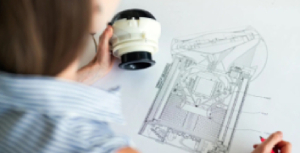
Have you ever wondered what happens to a product when you don't see it in the store anymore? Typically, people would assume one of two things about it, it was either bought by someone already and it was the last one in stock, or the store does not have the product anymore and could not get any more of it. Both of these assumptions are true, and both are part of the observable elements of what is known as the product lifecycle. For those who are into manufacturing products, knowing the ins and outs of product lifecycle management is key to not only determining how to ensure product and brand longevity, but it is also a way to gain deep insight into the behaviour of the target audience.
What is Product Lifecycle Management?
Much like living beings, each and every product seen on the market today undergoes what is known as the product lifecycle, which is the natural course of the product from development all the way to the point where it is no longer seen commercially. At this point, some people might think why would knowing about product lifecycle management (PLM) be important, when it seems like product sales will eventually decline over time. While this might be true, there are companies who leveraged greatly upon the insights they gained from PLM.
Here are some examples of products and brands that have been around for a very long time, and owe their longevity to insights gained from the market and to a product lifecycle manager savvy enough to execute their own PLM:
- Coca-Cola - 131 years
- JC Penny 121 years
- UPS - 248 years
- Boeing - 107
- LL Bean - 111 years
- Harley-Davidson - 120 years
- Kraft Foods - 120 years
- Kellog's - 129 years
While there are those who will argue that some of these brands provide basic necessities like clothing, transportation, and drinks, but it should be noted that these brands have many competitors in their respective industries, most of which they superseded and even outlived today. This is the power of knowing how your products are made, how it is accepted by your market, and how they might eventually go into decline over time (and how you could mitigate or even prevent this decline).
What are the Phases of the Product Lifecycle Management?
A successful brand does not necessarily focus on just one aspect of its product's lifecycle but on the entire package as a whole. This is how the most popular commercial brands are able to stay on the market, as they are able to figure out what part of the product's lifecycle might need improvement so that consumers are able to continue to buy into it longer.
Ideation Phase
Every great product begins with a great idea. The idea, however, should be able to go further than just the typical "find a need, fill a need" concept, because the brand or product should also be able to withstand the test of time and stay around long enough to be well-known. History is rife with seemingly great ideas at the time that turned out to be nothing more than novelties, dying out after some time.
While it might be quite difficult to predict how long a product will be liked by the consumers, there are a few considerations dictated by common sense that could help improve the product's chances of staying around, such as coming up with a product that does not rely too much on seasonal preferences, products that require difficult-to-acquire materials to create, and so forth.
Check this similar article out: Designing for Emotional Connection: How to Create Products That Resonate
Development Phase
Many products often show just how problematic they could become even from the development phase. There are some items that are simply too difficult or too costly to produce. Manufacturers should always take into consideration the price of the product when it is let out into the market. There is a need to balance the sale cost with the actual expenses involved in the production, as there is a point where the product could not be priced any lower, or the entire exercise is just a waste of time and money.
The development phase is also the time when initial testing of the prototype could be done. There are many guidelines in place today that ensure the safety of consumers, as some manufacturers might actually use the public for the testing phase, which could be dangerous at times. This is why the development phase is also the point where guidelines, safety precautions, and compliances are observed so that the released product is not harmful in the least.
Check this related article out: A Quick Guide to Understanding the Phases of Product Development
Launch Phase
While there are indeed many companies that prefer to test their products to the ultimate end, at some point, it needs to be launched and released to the public. This phase will also largely show just how well the product would be accepted by the public. Regardless of how massive and creative the marketing campaigns are before the actual launch, the true appreciation of the product could only be seen once the public is able to have access to it.
On a side note, it is important to remember that whatever marketing and advertising campaigns precede the product, there is a need to meet expectations or risk public outcry and disappointment. If the marketing campaigns drum up expectations too high for the realistic quality of the product, the consumers will definitely be outraged and drop the product before it even has a chance to be improved.
Aftersales Support
Almost every consumer today is aware of the importance of aftersales and support. If the product happens to be a fast-moving consumer good (FMCG) like food or snacks and there is a problem with it, consumers will want to know where they can complain about it. If the item happens to be an electronic or mechanical device that might require repairs, consumers will want to know what kind of warranty coverage comes with the product.
Offering these things to the consumer shows one immensely important thing about the brand: they care. This is one of the best ways to win over consumers to a brand or product, and in the case of the brands that have been around for quite some time, letting the customer know that they are in good hands goes a very long way to ensuring brand longevity.
Product Retirement
This is something that no entrepreneur would want to consider, as it means the end of the product or brand. The wiser businesses, however, know that it is an important facet of every brand because by knowing how the consumer might tire of or dislike the product, the brand could take steps to ensure their product does not go along that path. This is why many brands that have reached the end of the development phase (the point where the product could no longer be improved in any way), focus a lot of effort into coming up with promotions and gimmicks to ensure the consumers stay engaged with the brand.
Knowing if the consumer would want to try something else is also a very important bit of information, as this is where the brand begins to develop plans for making variants of its existing products. By making variants, the brand is able to maintain its identity but offer something new to the consumers.















































